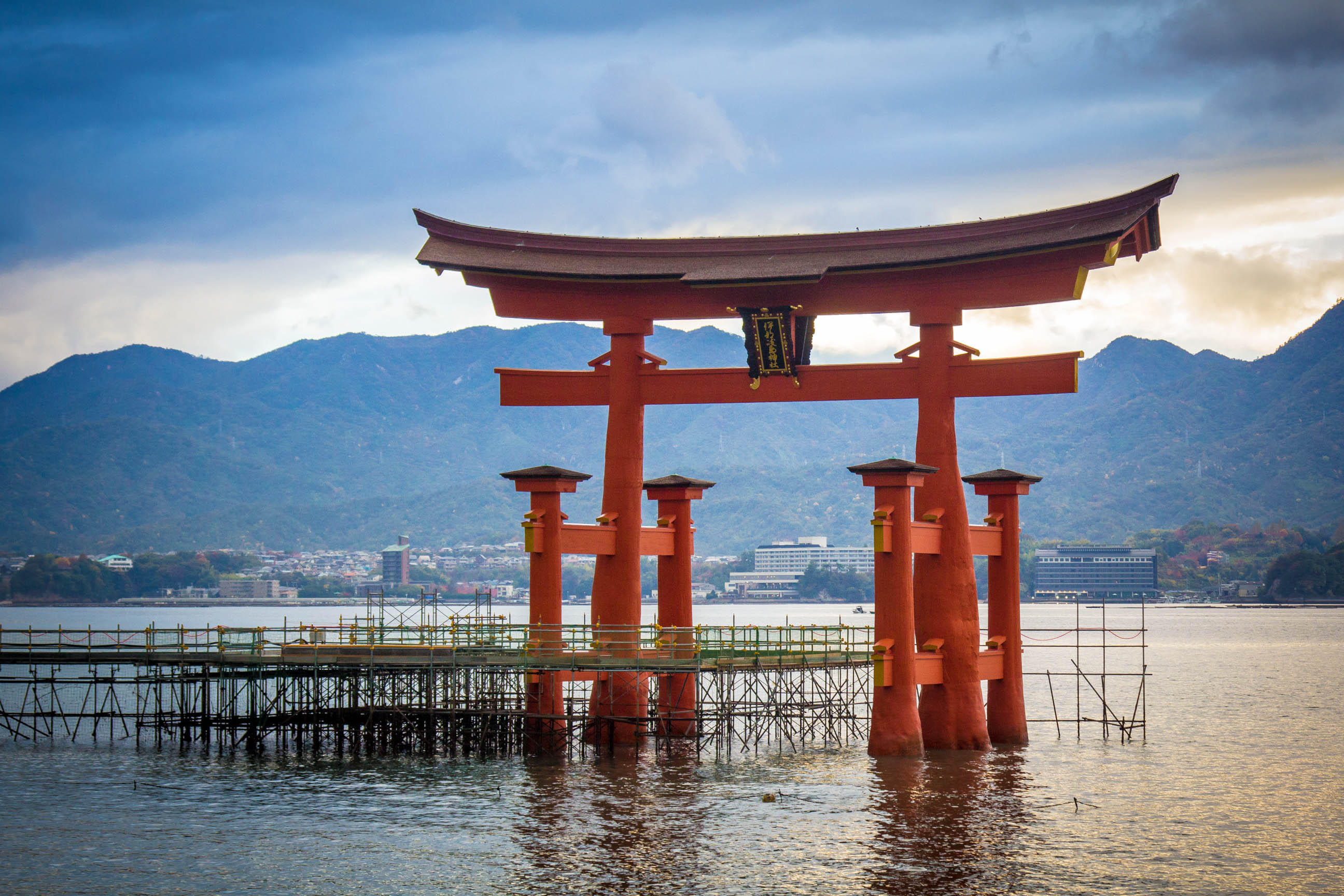About Itsukushima Shrine
The uniqueness of this shine is that the shrine and its torii have been built on water and seem to be floating in the sea during the high wide. During the low tides, the water goes down and you will be able to walk near the gate to see it up close. The shrine consists of multiple buildings which are connected by broadways with pillars as support over the sea. Some of the buildings which serve as the main attraction of the place during your Japan trip include the Main Shrine, noh theatre stage, and others.
Itsukushima Shrine Highlights
• Visit Itsukushima Shrine, a World Heritage site, renowned for being built on water and located on Miyajima Island, near Hiroshima.
• Enjoy looking at the famous Torii Gate gate which appears to float on water during high tide and can be visited on foot during low tide.
• Watch the Noh Theater Stage, which is one of the oldest Noh stages in the country, where performances are held to date.
• Go to the Marodo Shrine which is one of the biggest shrines and is famous for being dedicated to five male deities.
• Go to the main shrine with the purification hall and the worship hall where three female deities are worshipped.
How To Reach Itsukushima Shrine
- By Car: The Itsukushima Shrine is 3.5 km from the centre of Miyajima Island, it will take 12 min via the Takikoji route by car.
- By Ferry: Take a ferry to Itsukushima Ferry Terminal which is 3.5 km away and takes 12 minutes by car.
Best Time To Visit Itsukushima Shrine
Itsukushima Shrine is open year-round and is open from 6:30 AM every day. The closing time of the place varies from 5 pm to 6:30 pm, depending on the month and season.
- Best Season: The best season to visit Itsukushima Shrine is during Spring from March to May. The weather is mild during this time and the cherry blossoms add beauty to the picturesque settings.
- Best Day of the Week: The best day of the week is during weekdays from Tuesday to Thursday when there is less crowd at this popular landmark.
- Best Time of the Day: Early morning around 6:30 am when the shrine has just opened is the best time of the day to visit. During this time, a serene atmosphere is created by the sun's rays falling on the shrine.
Itsukushima Shrine Other Essential Information
- Before visiting, check the tide schedule as the Torii Gate is best visible during the high tide when it appears to be floating on the sea.
- If you are visiting during the low tide, you will be able to walk up to the gate and enjoy a closer look.
- Please wear comfortable shoes and refrain from wearing high heels as the corridors of Itsukushima Shrine have small spaces between the floorboards where your high heels may get stuck.
- Photography is allowed on the premises of the shrine however you cannot use flash inside the shrine building.
Look at the offshore Torii gate
The star attraction of Itsukushima Shrine is the Torii Gate which was built offshore from the shrine in 1875. This was the original entrance of the shrine and worshippers were supposed to pass under the gate by boat on their way to the shrine. Visit during the high tide and watch the gate appear to float on the water. Pay a visit during low tide and get an opportunity to walk up to the gate and observe it up close.
Start at the Marodo Shrine
shrine you will come across after walking along the eastern corridor. It is one of the biggest of the four shrines and is dedicated to five male deities. Watch the deities worshipped in this shrine - Ikitsuhikone-no-mikoto, Amenooshihomimi-no-mikoto, Amenohohi-no-mikoto, Kumanokusubi-no-mikoto and Amatsuhikone-no-mikoto.
Explore the Main Shrine
Visit the large central shrine and take a look at the purification hall and the worship hall. The shrine stretches over 271 square metres and has no doors and windows, creating a spacious environment. Observe that the shrine is dedicated to three female deities - Tagitsu-hime-no-mikoto, Ichikishima-hime-no-mikoto, and Tagori-hime-no-mikoto. These three female gods are goddesses of the sea, transport, fortune and art.
Observe the Noh stage
Situated within the shrine complex, the Noh Theater Stage is one of the oldest Noh stages in the country. It has been designated National Treasure of Japan and hosts traditional Noh performances. One unique thing about this stage is its specially constructed floorboards which create a high-quality sound.
Watch Bugaku traditional court dance and music
After the ten or so annual festivals, traditional music and dance performances take place against the stunning backdrop of the O-Torii gate and the sea. As per Taira-no-Kiyomori, the dances including 'Ryō-ō' and 'Nasori' were brought over from Shitennoji Temple in Osaka. You can still watch their traditional art form and admire them as you are transported back to the Heian period.















.jpg?w=1280&dpr=1)



